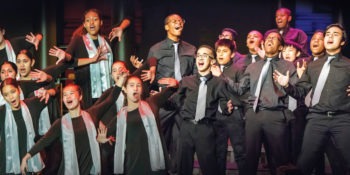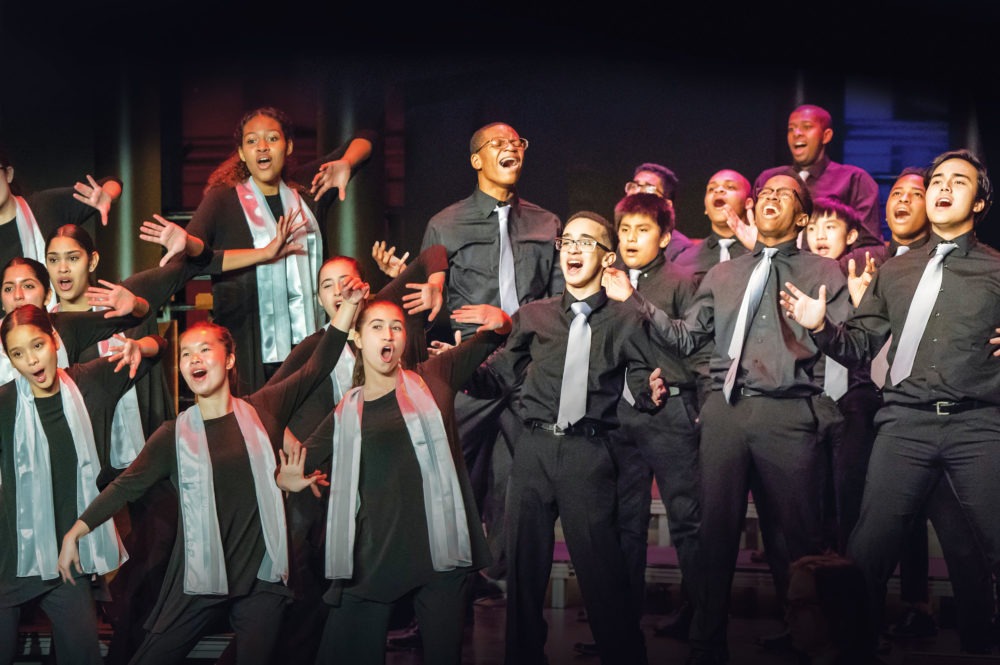Coming to TPAC:
Evan Hansen Lottery!
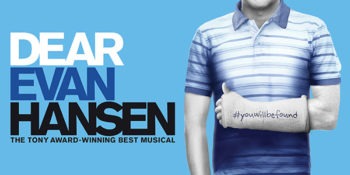
NASHVILLE, Tenn. – Described by the Los Angeles Times as a “cultural phenomenon,” Dear Evan Hansen makes its Nashville debut Sept. 10-15 at the Tennessee Performing Arts Center’s Jackson Hall. In advance of the one-week engagement, the production announces it will host a digital ticket lottery through Lucky Seat, offering fans the chance to purchase a limited number of $25 tickets per performance.
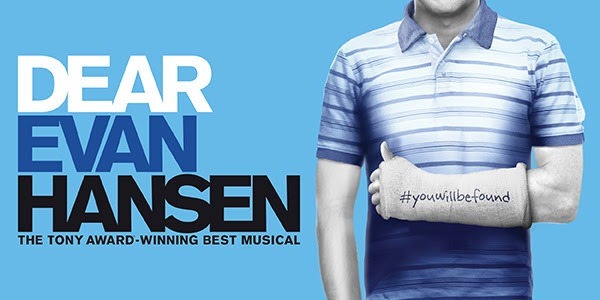
Lucky Seat will begin accepting entries 48 hours prior to the first performance at TPAC in Nashville and will be accepted until 9 a.m. CT the day before the performance.
Fans who have been selected will be notified daily via email and can then purchase up to two (2) tickets at $25 each. The ticket lottery will continue on a rolling basis for every performance in the engagement. All entrants are encouraged to follow Dear Evan Hansen on Instagram (@dearevanhansen), Twitter (@dearevanhansen) and Facebook (@DearEvanHansen) for additional lottery news and information.
Entrants must be 18 years or older. A valid, non-expired photo ID that matches the name used to enter is required for pickup. Seat locations awarded by the lottery are subject to availability. Additional lottery requirements can be found at www.luckyseat.com/
Dear Evan Hansen features a book by Tony Award winner Steven Levenson, a score by Grammy®, Tony® and Academy Award® winners Benj Pasek and Justin Paul (“La La Land,” “The Greatest Showman”), and direction by four-time Tony Award nominee Michael Greif (“Rent,” “Next to Normal”).
Declared “One of the most remarkable shows in musical theatre history” by Peter Marks of the Washington Post, Dear Evan Hansen opened at the Music Box Theatre to rave reviews on December 4, 2016.
There, it has broken all box office records and struck a chord with audiences and critics alike, including New York Times critic Jesse Green, who, in his May 2019 re-review of the show, declared it “more and more ingenious with each viewing. It is more hopeful than ever.”
In addition to winning six 2017 Tony awards and a 2018 Grammy Award, Dear Evan Hansen has won numerous other awards, including the 2017 Drama League Award for Outstanding Musical Production and for the off-Broadway production, two Obie Awards, a Drama Desk Award, and two Outer Critics Circle Awards and two Helen Hayes Awards. Dear Evan Hansen is also the winner of the Broadway.com Audience Choice Awards three years running and was just proclaimed the Best Long-Running Show and the Best Touring Production in the 2019 Broadway.com Audience Choice Awards.
Dear Evan Hansen, produced by Stacey Mindich, features scenic design by David Korins, projection design by Peter Nigrini, costume design by Emily Rebholz, lighting design by Japhy Weideman, sound design by Nevin Steinberg, and hair design by David Brian Brown. Music supervision, orchestrations and additional arrangements are by Alex Lacamoire. Ben Cohn is the Associate Music Supervisor. Vocal arrangements and additional arrangements are by Justin Paul. Danny Mefford is the choreographer. Casting by Tara Rubin Casting/Xavier Rubiano. Sash Bischoff, Adam Quinn and Danny Sharron are the Associate Directors. Judith Schoenfeld is the Production Supervisor. U.S. General Management 101 Productions.
For more information, visit DearEvanHansen.com, or find the show on Instagram, Twitter, and Facebook.
If You Go:
Dear Evan Hansen
Sept. 10-15, 2019
TPAC’s Jackson Hall
505 Deaderick St.
Tickets:
TPAC.org
615-782-4040
Traditions in Music City
Plaza Mariachi: Come for The Music, Stay for The Circus

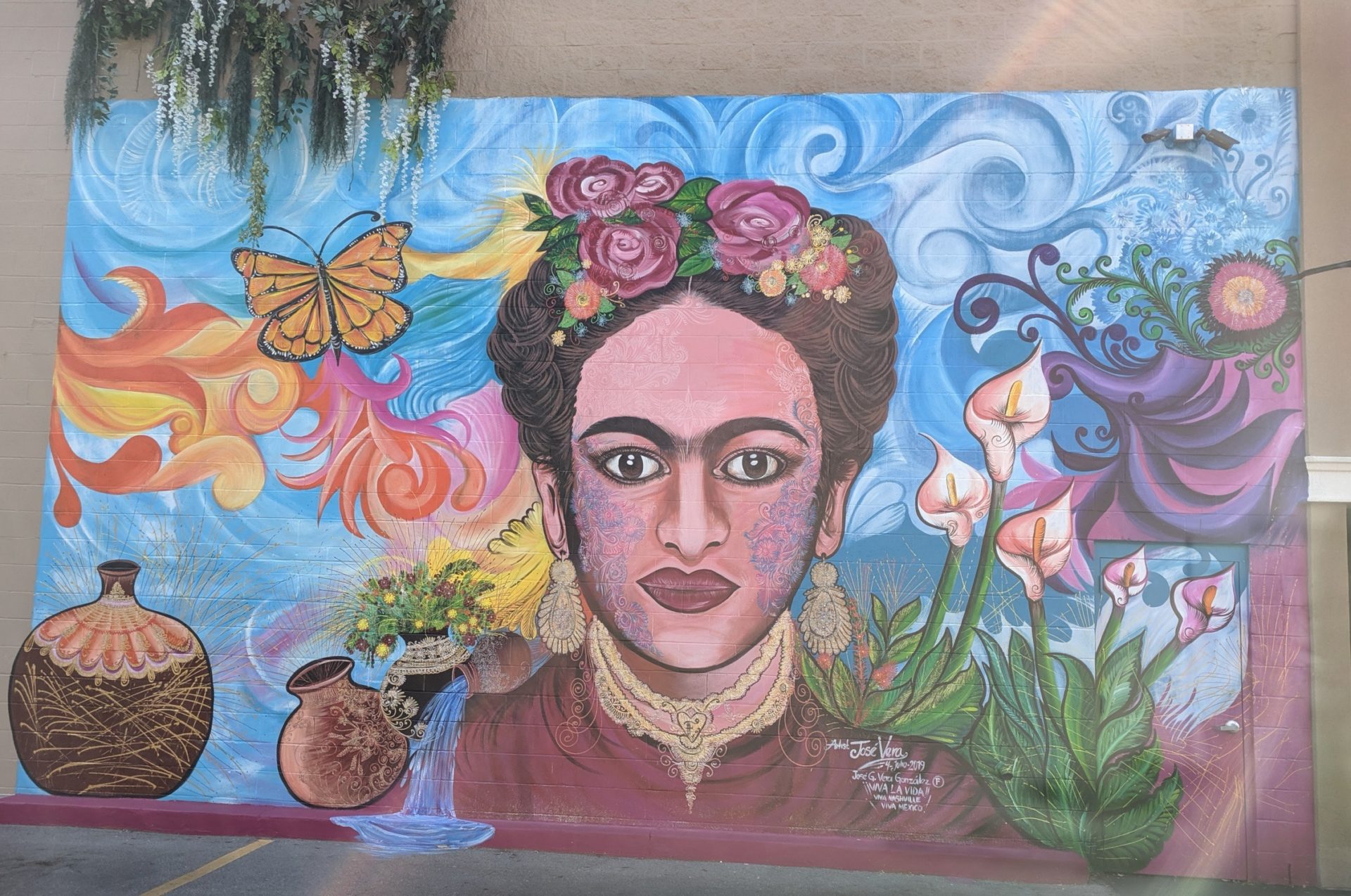 Nolensville Pike, south of downtown Nashville, is known for being one of the most multicultural parts of town. Mexican taquerias are next door to Indian markets, Middle Eastern restaurants, and Korean churches. There are ten international markets in a three mile stretch alone. Back in 2016, Nashvillians in this area were wild with curiosity as to what an abandoned Kroger building on Nolensville Pike would become when construction began on the site. The Plaza Mariachi opened on May 12th, 2017 to great fanfare, and it has grown to be wildly popular. Looking at it from the outside, one might walk in expecting a
Nolensville Pike, south of downtown Nashville, is known for being one of the most multicultural parts of town. Mexican taquerias are next door to Indian markets, Middle Eastern restaurants, and Korean churches. There are ten international markets in a three mile stretch alone. Back in 2016, Nashvillians in this area were wild with curiosity as to what an abandoned Kroger building on Nolensville Pike would become when construction began on the site. The Plaza Mariachi opened on May 12th, 2017 to great fanfare, and it has grown to be wildly popular. Looking at it from the outside, one might walk in expecting a
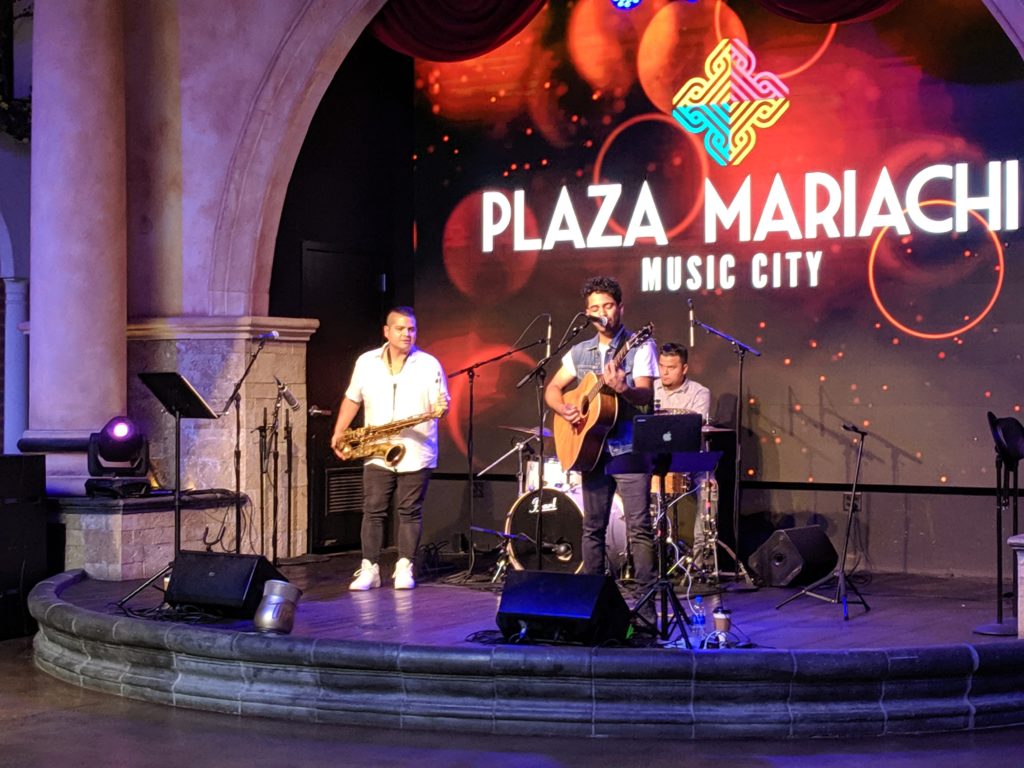
typical shopping mall. But when you step inside, you are instantly transported to a Latin American market with enticing food stalls around a central food court, and little streets lined with shops carrying everything from folk crafts to the most Gorgeous quinceañera dresses imaginable.
The tactile design of the space is remarkable, with different business fronts sporting tile, thatching, adobe, stained glass, and mosaic, many with flowering vines gracefully overflowing from the roofs. While the space feels like an open air plaza, it is in fact the renovated Kroger; the airiness is provided by three enormous skylights that give the food court a sun dappled feeling. Depending on the time of day and day of the week, your journey might be accompanied by a flamenco guitar, violin, or a full Mariachi band, who perform on a stage while people wander by eating paletas (Mexican popsicles that shame all other popsicles), street corn, or all other manner of tasty treats.+
A recent visit to the Plaza Mariachi allowed this reviewer to take a look at the breathtaking new mural of Frida Kahlo on the side of the building, and nab a pico de gallo paleta (it might sound odd, but was utterly delicious) before settling in to enjoy some music. The Gustavo Guerreo trio, featuring Gustavo Guerreo on guitar and vocals, backed by drums, sax, and flute, provided a heady counterpoint to the paleta. The band was tight, the energy on stage was contagious, and Guerreo’s charisma and supple voice charmed the audience with his original songs- a stylistic blend of Latin jazz and folk music- and the occasional Beatles cover in equal measure.
Speaking to Guerreo after his set was a treat, as he is a young man with the skill of instantly putting one at ease, and making it seem as though you have been friends for years. Guerreo hails from Honduras, but spent much of his later childhood and teen years in North Carolina. He is a passionate advocate for DREAMers; his bilingual cover of John Lennon’s “Imagine,” recorded with Youtube sensation Alex G., was chosen by the Democratic National Committee to be part of their fight for the DREAM Act in 2017. It’s a beautiful video, you can check it out here:
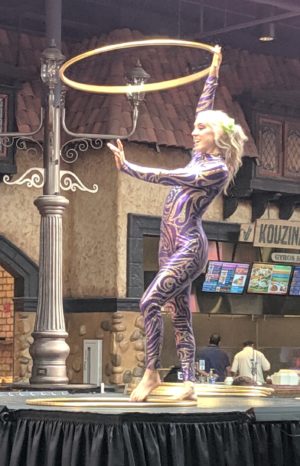
Guerreo’s set ended, and two women in sparkly unitards from the Nashville circus group Beyond Wings took to the air, in a very literal sense. Plaza Mariachi has two sets of aerial silks installed in the center of the food court, and these ladies performed a breathtaking routine 30 feet above the diner’s heads. One of the women, Grace Good, is also an accomplished hula hooper and performed a dynamite hooping routine, finishing with seven hoops undulating around
various appendages.
Live music can be heard daily, and circus performances are weekend staples, but the fun doesn’t end there. The Plaza Mariachi boasts salsa dance nights, Mexican folk dancing, karaoke, and trivia nights. Sometimes it transforms into a latin dance club, other times a wrestling ring is installed and patrons can enjoy Lucha Libre (Mexican wrestling) while they eat. Not to mention there are slamming lattes and equally slamming margaritas available, depending on your mood.
Scanning the crowd, one gets the impression that the Plaza Mariachi is part Hispanic community center, part Hispanic ambassador ship to Nashville. The majority of the patrons are indeed of Latinx origin or extraction, but the atmosphere is welcoming to those from outside of that community. Families, couples, groups of “girls night out-ers,” and highschool kids that primarily hang out at the arcade (did we forget to mention the arcade? Yes. They have one.) co-exist peacefully and pleasantly. Every color of humanity is represented, because who in their right mind doesn’t appreciate delicious food, beautiful music, and circus babes in an idyllic setting?
For more information about the Plaza Mariachi, please visit https://plazamariachi.com/ . To hear more of Gustavo Guerreo’s story and music, please visit https://www.gustavoguerreromusic.com/ , and subscribe to his YouTube channel https://www.youtube.com/user/GustavoGuerreroMusic . To learn more about the Beyond Wings circus company, please visit https://beyondwings.webs.com/ .
Coming September 20-22 at TPAC
Nashville Ballet: Romeo and Juliet
Choreography and direction by Paul Vasterling
Fight direction and choreography by Tim Klotz
Music by Sergei Prokofiev
Live music performed by the Nashville Symphony
William Shakespeare’s star-crossed lovers return to the stage to open Nashville Ballet’s season. The most iconic love story ever told, Romeo and Juliet sweeps audiences away in a whirlwind of forbidden passion and swoon-worthy romance. Featuring action-packed fight scenes and lush period costumes, this timeless and theatrical production whisks audiences to the streets of fair Verona as the Bard’s famous tragedy unfolds. Forbidden passion, action-packed fight scenes, and swoon-worthy romance whisk audiences away as the timeless story of Shakespeare’s star-crossed lovers unfolds this September 20-22.
https://www.youtube.com/watch?v=3dhGCAKEgT0&feature=youtu.be
Traditions in Music City
The Nashville Irish Seisiún Scene: McNamara’s Irish Pub and Restaurant
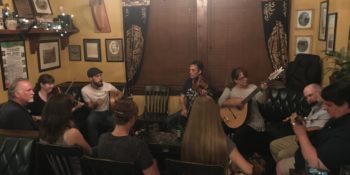
This article is part of a new series, Traditions in Music City, which will focus on the many and diverse musical traditions happening around Nashville. Instead of a critical focus, they will seek to communicate the history and sense of community in an event. Be sure to share and leave a comment at the end!
If you ask most people what they envision when you mention a traditional Irish seisiún (pronounced session), they’ll describe a scene where several grandfatherly types are playing lively tunes on fiddles, flutes, and accordions, tucked in the corner of a quaint pub- resplendent in dark wood- in the Irish countryside. The bi-weekly seisiún that happens at McNamara’s Irish Pub and Restaurant near the Nashville airport isn’t dissimilar from this description, except the location is Music City instead of County Clare, and the age of the seisiún players runs the gamut from early 20’s to the aforementioned grandfathers. Lively tunes abound, as does the dark wood and cozy atmosphere.
 Sean and Paula McNamara opened McNamara’s Irish Pub and Restaurant in the Donelson area of Nashville in 2010. The pub’s success is reflected in the expertise the two bring to the table: Paula was born and raised in County Down in Northern Ireland, and is an veteran of the hospitality industry. The inviting atmosphere and cozy decor reflect her attention to detail. Sean is a second-generation Irishman, who moved to Nashville from the Northeast to pursue his love of folk music. The fact that McNamara’s boasts fantastic live traditional music in their main room Wednesday through Sunday, often featuring Sean’s Irish Band, Nosey Flynn, is a testament to Sean’s discerning ear. The main room also serves as a venue for noted Irish musical acts to perform at when passing through Nashville. But hosting stage acts, serving authentic pub fare, and featuring a wide selection of Scotch and Irish whiskeys wasn’t enough. Within a few months of opening, Sean reached out Irish fiddler Bill Verdier and Irish flutist Bill Wolfe to add the final magical touch to the pub: a seisiún.
Sean and Paula McNamara opened McNamara’s Irish Pub and Restaurant in the Donelson area of Nashville in 2010. The pub’s success is reflected in the expertise the two bring to the table: Paula was born and raised in County Down in Northern Ireland, and is an veteran of the hospitality industry. The inviting atmosphere and cozy decor reflect her attention to detail. Sean is a second-generation Irishman, who moved to Nashville from the Northeast to pursue his love of folk music. The fact that McNamara’s boasts fantastic live traditional music in their main room Wednesday through Sunday, often featuring Sean’s Irish Band, Nosey Flynn, is a testament to Sean’s discerning ear. The main room also serves as a venue for noted Irish musical acts to perform at when passing through Nashville. But hosting stage acts, serving authentic pub fare, and featuring a wide selection of Scotch and Irish whiskeys wasn’t enough. Within a few months of opening, Sean reached out Irish fiddler Bill Verdier and Irish flutist Bill Wolfe to add the final magical touch to the pub: a seisiún.
Irish seisiúns, such as they appear in the current day, became popular with Irish immigrants on both sides of the Atlantic in the 1950’s, particularly in London and New York. Playing tunes with friends over a pint at the pub at the end of the week was both a way to relax, and a way to bond with other folks from the home country for a bit of reminiscing. First, second, and third generation Irish men and women have grown up attending and participating in seisiúns, and the infectious joy of traditional Irish music has spread to those without any Irish heritage at all. The Irish music and dance spectacle Riverdance that debuted in 1995 helped spark interest in Irish arts around the world, inspiring seisiúns in pubs from Moscow, to Tokyo, to Rio de Janeiro.
Over the years, seisiúns have developed a certain amount of etiquette required from the participants. This includes having an established leader or leaders of the seisiún who
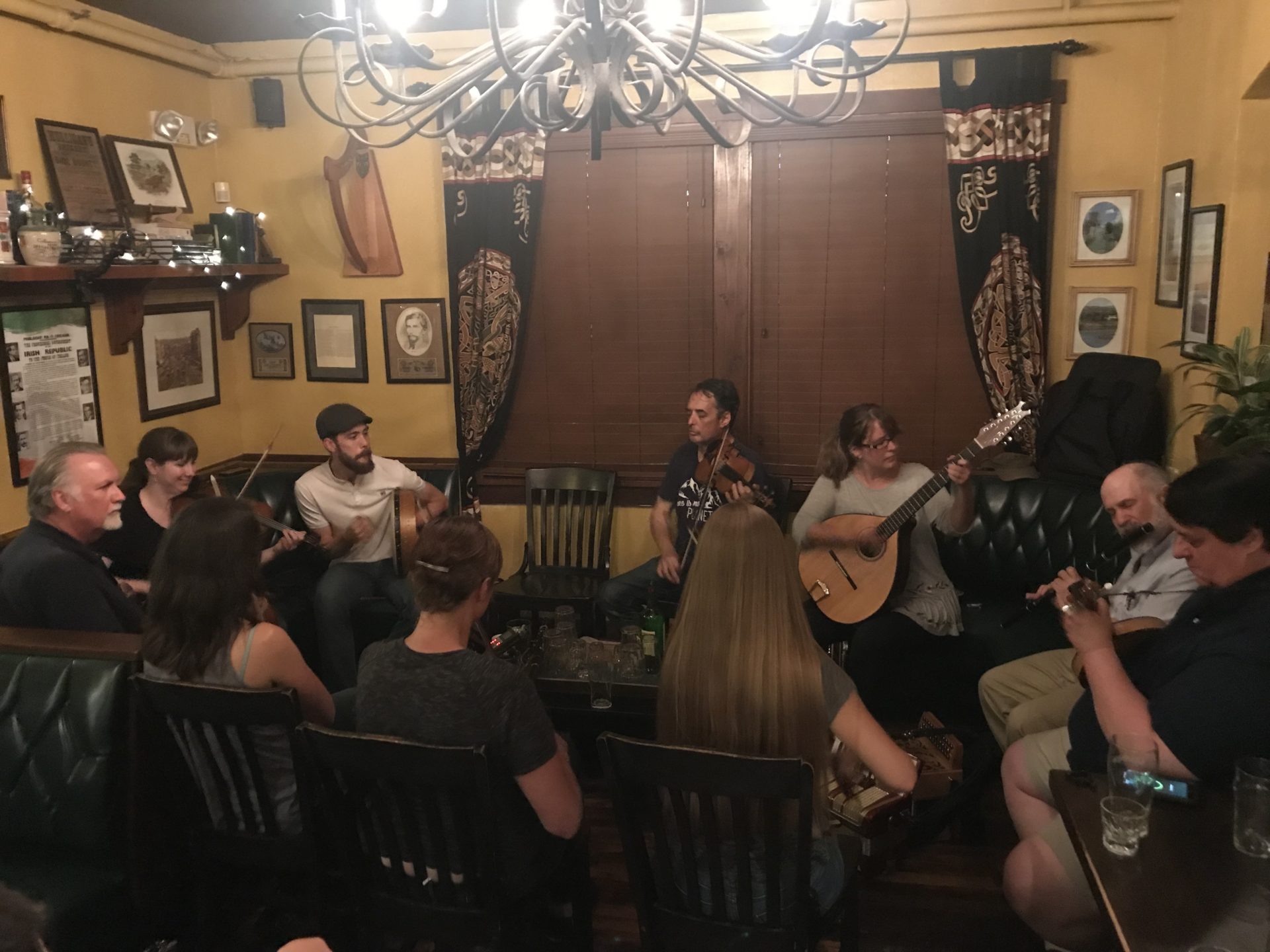
chooses the sets of tunes to be played, and limiting the number of bodhráns (frame drums covered in goats hide played with double ended mallets, or tippers), guitars, or bouzoukis playing at any given time so that melody instruments are not overwhelmed by competing accompaniment. If the seisiún leader invites a singer to sing, the entire group of musicians (and often the whole pub) will pause their conversations to listen respectfully; once concluded, the riotous tunes and background chatter will start back up. Unlike Bluegrass music, Irish music does not rely on improvisation. Melody instruments are expected to play in unison, and players will jump in and out as they know the tunes being called.
Nashville has a long tradition of supporting folk music, but the seisiún scene didn’t coalesce until 1995, when an English pub called Sherlock Holmes opened on Elliston Place. A small group of Irish musicians, spearheaded by the aforementioned Bill Verdier and Bill Wolfe, started a weekly seisiún that grew until the pub closed its doors in 2006. At that point the seisiún changed venues to the (then) recently opened 12th South Tap Room, where it remained until finding a home at McNamara’s. It appears to be a mutually beneficial arrangement; pub regulars don’t expect a stage show, but they come to listen to players, young and old, joyfully wend their way through tunes that trace their lineage back two hundred years or more.
Over the nine years that the seisiún has resided at McNamara’s, many luminaries of the global Irish music community have stopped by to share tunes, and several have made Nashville, and this seisiún, home. Cities such as New York, Boston, or Chicago have many competing seisiúns; so much so that one could go to a different seisiún every night of the week. Nashville may not boast a large number of seisiúns (at the time of this writing there are three seisiúns in the Greater Nashville Area), but the people and the music at the McNamara’s seisiún are world class.
McNamara’s Irish Pub and Restaurant can be found online at mcnamarasirishpub.com. The seisiún occurs every 2nd and 4th Tuesday of the month, from 7:00 -9:30 pm. This is a closed seisiún, meaning it is suitable for advanced level players and is invitation only. Beginning level players are encouraged to check out the seisiún and instruction offerings at the Fiddle and Pick Musical Heritage Center, Fiddleandpick.com. A Pocket History of Irish Traditional Music by Professor Gearóid Ó hAllmhuráin is a fascinating read for those wanting more detailed information about Irish music, musicians, and instruments.
Traditions in Music City
Old Jams, New Jams, Blackberry Jams, and Blues
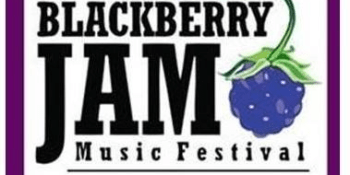
***This article is part of a new series, Traditions in Music City, which will focus on the many and diverse musical traditions happening around Nashville. Instead of a critical focus, they will seek to communicate the history and sense of community in an event.***
On Saturday, June 22, 2019, the sleepy village of Leiper’s Fork saw its 16th annual Blackberry Jam Music Festival. With the previous night’s harsh weather and morning rain, it was uncertain whether the event would proceed, and attendance was low for the first couple of hours. However, the small group of hands-on, dedicated volunteers and performers and their love for making music and benefitting their community showed out and made it clear that a little rain couldn’t halt their parade.
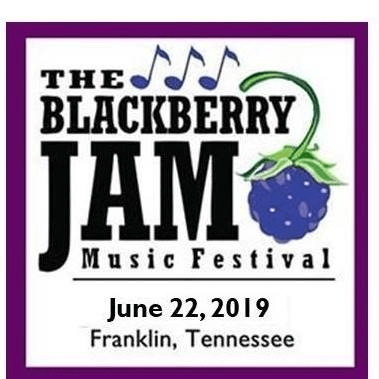
Beginning with the Viva! NashVegas radio show, the festival segued into the children’s program. Though clearly for kids, the children’s program was enjoyable for people of all ages. For those uninterested in singing about cows and roly polys, the program was scheduled at noon, so it was the perfect time to check out the food truck offerings, which included trucks specializing in barbeque, burgers, ice cream, coffee, and a stand serving cotton candy.
By 1:00, the festival had picked up many more attendees, and the children’s program had the lively performers Farmer Jason and Roger Day to amp up the younger audiences for the day’s remaining performances. Though aimed at children, their performances transcended generational lines and were certainly fun for the whole family. “Ode to a Toad” (Farmer Jason) and “Roly Poly” (Roger Day) were hits with everyone. Giri and Uma Peters performed very well between Farmer Jason and Roger Day with Uma on clawhammer and gourd banjos and Giri on fiddle and guitar. The sibling duo is a prime example of how the small, yet high quality festival allows young, early-career musicians to perform in the same setting as critically acclaimed musicians with extensive accolades.
In addition to these emerging talents (who already have a recorded album and are actively touring), the stage was graced by a Grammy winner (Lee Roy Parnell), CMA award winners (Parnell, Lockwood Barr) and members of the Library of Congress “Americana Women: Roots Musicians – Women’s Tales and Tunes” MusicBox Project (Jackie Merritt and Resa Gibbs of the M.S.G. Acoustic Blues Trio), not to mention Farmer Jason and Roger Day, who both have a lengthy list of accolades when it comes to children’s music.
After the children’s program, Tray and Jo Ann Eppes kicked off the rest of the show with some bluesy original songs. Seasoned veterans of the Blackberry Jam stage, they make the yearly trip to Leiper’s Fork all the way from their home in Central Virginia where Tray runs a pottery studio, in addition to making music on the road.
The next performer to grace the stage was Lockwood Barr. According to Music Row Magazine, the 2016 CMA Emerging Artist award winner “has the goods”, and I believe them. Barr’s music ranges from soft and sweet to fierce and emphatic (think Underwood’s Before He Cheats), and often writes from a personal place about tough subjects like suicide, and it is easy to connect with her and her music as an audience member. To a young adult audience, bluegrass and country is often considered old hat, but Barr’s vocals and visual branding seems to make the music more relatable to a wider audience without sacrificing what makes her music bluegrass.
Reckless Johnny Wales and the Hip Replacements (in which “Hip” can be read as either a noun or an adjective) provided a refrain from the gentler blues of the Eppes duo and the softer vocals of Lockwood Bar. The next group, Heavy Drunk and the Hurricane, was lacking six members of its nine-strong group, but still rocked the stage with both beautiful vocal harmonies and. Their simple yet emotional rendition of “Georgia On My Mind” provided a soulful contrast to some of the more robust blues of the festival.
Next on the program was Carol and Dale, owners of the Boyd Mill Farm and the hosts of the Blackberry Jam. The lovely Boyd Mill Farm has always been the venue for the festival. Carol Warren and Dale Whitehead founded the festival in 2003. The venue, though outdoors, had a unique intimacy that made the connection between performer and audience easygoing. Carol and Dale’s performance was delightfully upbeat, likely because the bass (Carol is a bassist) was more prominent. Unfortunately, Carol and Dale’s performance was cut a little short due to impending rain, so we were instructed to return to our vehicles until it passed. Though many people chose to leave at this time, when the festivities started up again, it seemed that there were more people than before.
Baillie and the Boys (Kathy Baillie, Michael Bonagura, and Alan LeBoeuf) were the next performers, and the combination of Kathy’s light but powerful vocals and the ominous sky created an electric atmosphere to usher in the evening. Baillie and the Boys played a more straightforward country set and typically sang in a three-part harmony, with songs like “The Road that Led Me to You” and “She Deserves You”.
Freddie and Francine followed their act with an excellent acoustic duo. Though some have described them as a pop band, their style seems difficult to pin down, and their website would argue the same. Primarily branding themselves as “folk,” Freddy and Francine’s vocals and stage presence represent a unique blend of folk and country and maybe even pop, but rather than pigeonhole them I would say they have a certain je ne sais quois that sets them apart.
Beyond quality music and food trucks, the festival has been dedicated to giving back to the community. From the beginning, the festival donated proceeds to an assortment of
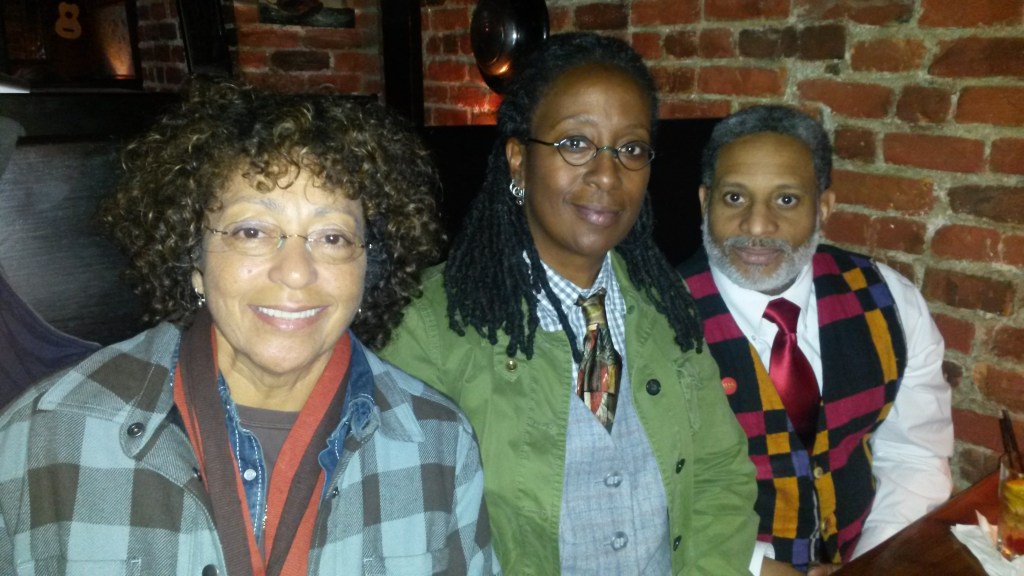
charities, but since 2009, all proceeds from the festival have been donated to the Hard Bargain Association, an organization dedicated to rehabilitating existing homes and building new, affordable homes in the historically African-American Hard Bargain neighborhood in Franklin, TN. Last year, the festival donated $8,000 to the Hard Bargain Association, and it will be exciting to see the outcome for this year.
Perhaps one of my favorite performances of the day was that of the M.S.G. Blues Trio, who travelled to the festival from the D.C. area. Comprised of Jackie Merritt, Miles Spicer, and Resa Gibbs, this group emphasized audience participation. As dusk set in, their performance was on the porch of the house at Boyd Mill Farm, and the audience was able to move closer and experience their music in an even more personal setting. Audience favorites were “Glory Glory, Hallelujah” and “Mean Church People”, the latter being a playful jab at churchgoers with a holier-than-thou mentality. The final performance was by Lee Roy Parnell, whose clear vocals, Texas twang, and slide guitar playing rounded out the evening.
If you haven’t been to the Blackberry Jam Festival before, I would highly recommend doing so. The music is phenomenal, the atmosphere is friendly and fun, and it is place where you can truly feel like part of the Middle Tennessee music community. The festival is every fourth Saturday in June, so keep it in mind!
Fiddler on the Roof at TPAC
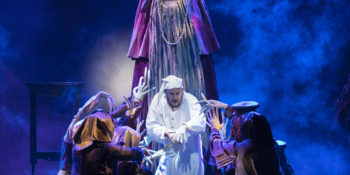
Fiddler on the Roof at TPAC
On Tuesday, I took a short step away from the classical music world, and enjoyed a magical night of Broadway! TPAC is currently rounding out its season with the classic Fiddler on the Roof, a story of a Jewish dairyman, his five rebellious daughters, and the deeper struggles of a Jewish community in early 20th century Russia. Fiddler is well-known and well-loved by many, and this company certainly “raised the roof” with their energetic and heartfelt performance.
The show opened on Tevye (played by Yehezkel Lazarov) , the dairyman, as he explained the traditions of the Jewish community in the village of Anatevka. From the moment he spoke his first lines, it was clear Mr. Lazarov was perfect for this role and would tell the story with tons of charisma. The scene then unfolded into a full-cast musical number
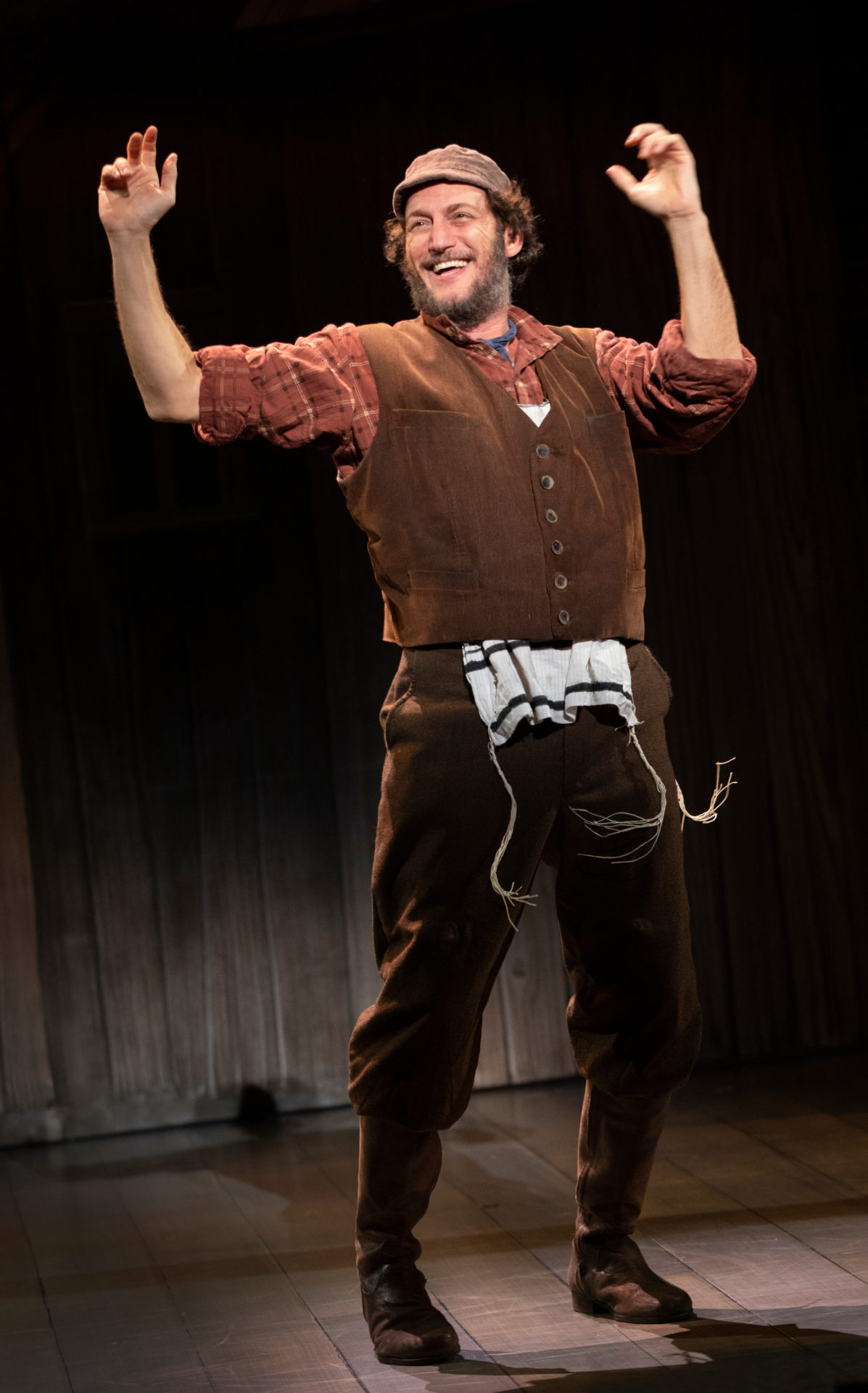
(“Tradition”), which was the true moment the audience was captivated for the night. It was quite a wall of sound, with timbres and harmonies absolutely perfect for a Broadway show.
Next came “Matchmaker, Matchmaker,” which featured the eldest three of Tevye’s daughters, Tzeitel, Hodel, and Chava. The chemistry between the three women onstage was phenomenal, and perfectly captured the quarreling of siblings as well as the genuine fear of having no say in an arranged marriage.
Shortly after, we transitioned to arguably the most famous scene of the entire show, “If I Were a Rich Man,” which was yet another opportunity to showcase Tevye’s personality. While there was a note of sincerity that rang true the entire time, the scene was full of a playful sort of sarcasm that really brought everything together and made it interesting. It was nearly impossible to look away while Mr. Lazarov was onstage.
The next notable moment of Act I, and quite possibly my favorite scene of the entire production, was “Tevye’s Dream,” in which he recounts a false dream to his wife Golde in order to ease her into the idea of Tzeitel marrying Motel, a poor tailor that Tzeitel loves, as opposed to Lazar Wolf, a rich butcher arranged by the Matchmaker. The chorus was outfitted in grotesque costumes to resemble Golde’s deceased ancestors, and many were on stilts in order to appear larger than life. It was truly frightening and so different than the rest of the show, which made for an breathtaking scene. Olivia Gjurich, who played the dead wife of Lazar Wolf, harnessed a kind of chaotic energy perfect for the scene, and had the vocal technique to pull it off wonderfully. I truly wish that we could have seen more of her in a solo role!
Act I ended with Tzeitel and Motel’s wedding, which was complete with truly impressive dance numbers! All of the extended dance sequences throughout the show were high-energy and athletically challenging, and it was truly a treat to behold! The tensions between the Jewish community and the Russian law enforcement presence came to a head in this scene, with the soldiers and Constable (played by Jeff Brooks) participated in a small pogrom at the wedding. Mr. Brooks held character extremely well and instilled a sense of fear in everyone in the audience, reminding everyone of the overarching conflict in the show. It felt a bit strange to clap after the seriousness of this scene, but Act I was too fantastic to not show any appreciation.T
Act II opened with Tevye’s second daughter, Hodel, announcing that she will be marrying Perchik, a traveling student and radical that has been staying with the family. This goes against all previous traditions, but after another passionate monologue, Tevye agreed to the union. The chemistry between Hodel (played by Ruthy Froch) and Perchik (played by Ryne Nardecchia) was fantastic, and it was quite sad that we did not get to see more of them together onstage!
After this one happy moment, Act II definitely took a turn for the darker, with Tevye’s third daughter Chava, announcing that she wishes to marry Fyedka, one of the Russian officers in the town. Although Tevye accepted many things that went against tradition, marrying outside of the Jewish faith was too far. While Mr. Lazarov kept his role pretty

light-hearted, he transitioned perfectly to an angry, broken character as he announced his daughter was “dead to him.” It was an extremely emotional performance, and perfectly captured the struggle between tradition and acceptance.
The show continued down this darker path, with the conflict ending with the entire village in Tevye’s barn as the Russian authorities close in, informing them all that they must sell their properties and leave the village in three days. All of the actors in the company perfectly captured this shift in mood, and effectively showed that nearly all other conflicts pale in comparison to this. The show ends with everyone in the village packing their homes and leaving, discussing their destinations and saying what are clearly their final goodbyes. Tevye even seems to concede and accept his daughter Chava once again, although the family is separated in the end. Much like Act I, it feels a bit strange to clap at the end of this show, but it is truly effective in creating such a strong feeling of sadness and fear.
All in all, this was a stellar performance of Fiddler on the Roof. The cast was wonderful, particularly the leads, and the show featured so many amazing dance numbers and such powerful chemistry between actors (namely Tevye and Golde)! The sets and costumes were also beautiful and fitting, and really added the final touch to the acting and music. Aside from a few minor problems that can easily be chalked up to it being opening night, it was one of the better productions that I have seen. I cannot think of a better way for TPAC to end their season.
The show runs through Sunday, June 30, with two performances on Saturday and Sunday. I assure you that it is well-worth seeing!

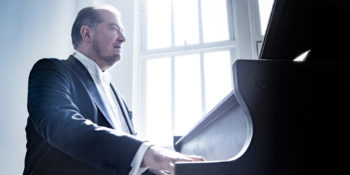
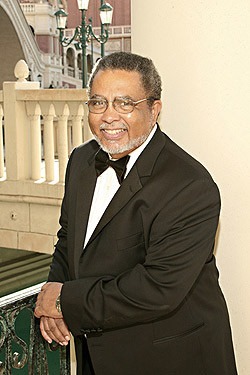
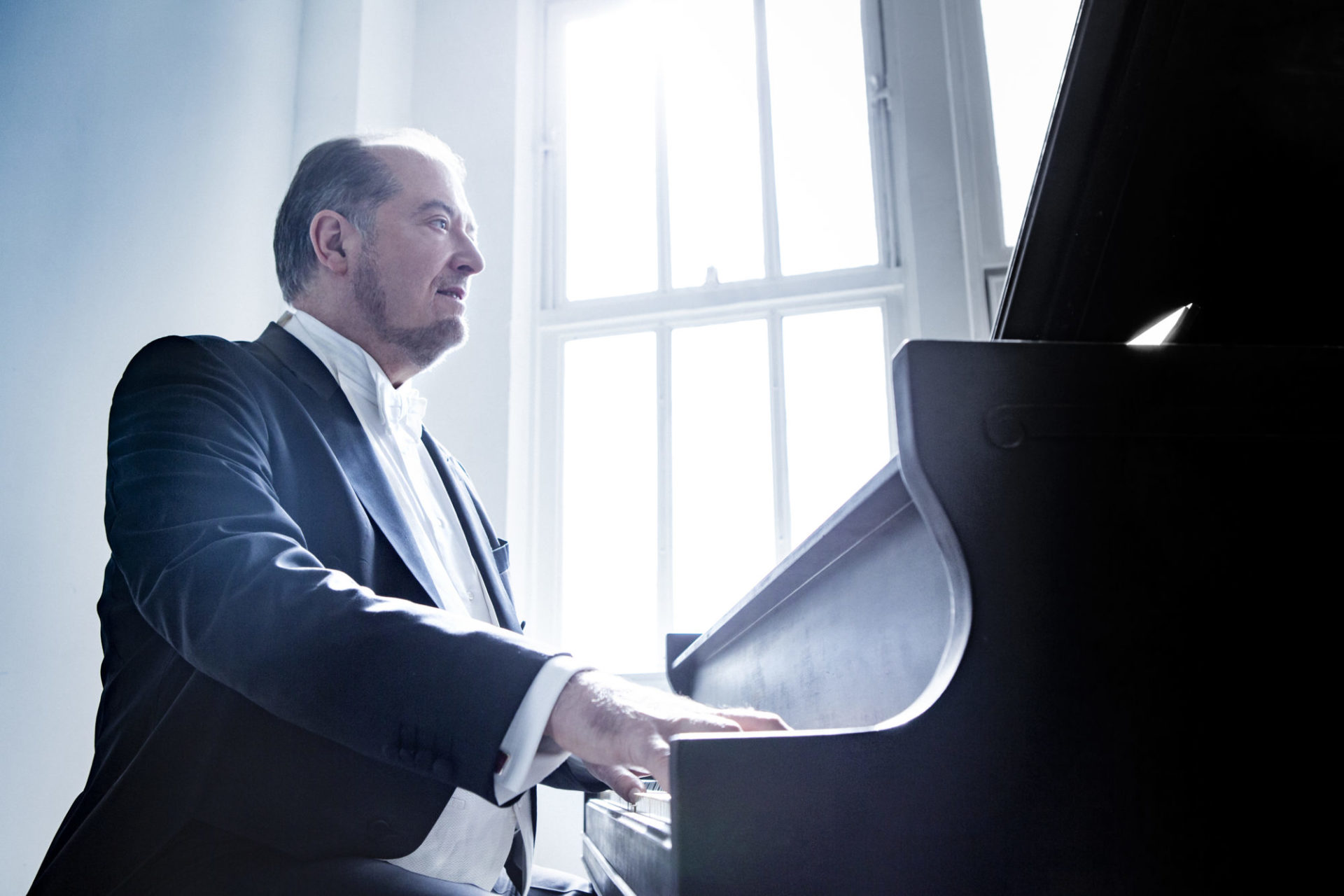


 late night snack on the way home. There I was extremely lucky to catch a set from the New York based Jonathan Kreisberg Quartet. Their interpretation of standards like Wayne Shorter’s “Fee Fi Fo Fum” or Vernon Duke’s “Autumn in New York” were both transcendent and intimate—Kreisberg’s back phrasing on the latter channeled Billie Holiday. This autumn Rudy’s will feature a wonderful collection of local and visiting names. Coupled with the daily jazz available at Skull’s Rainbow Room, the Jazz Workshop or even the City Winery where the Tennessee Jazz and Blues Society’s Great Albums Series continues with a performance of Thelonious Monk’s classic LP Misterioso on Sunday, jazz too continues to thrive in the Music City.
late night snack on the way home. There I was extremely lucky to catch a set from the New York based Jonathan Kreisberg Quartet. Their interpretation of standards like Wayne Shorter’s “Fee Fi Fo Fum” or Vernon Duke’s “Autumn in New York” were both transcendent and intimate—Kreisberg’s back phrasing on the latter channeled Billie Holiday. This autumn Rudy’s will feature a wonderful collection of local and visiting names. Coupled with the daily jazz available at Skull’s Rainbow Room, the Jazz Workshop or even the City Winery where the Tennessee Jazz and Blues Society’s Great Albums Series continues with a performance of Thelonious Monk’s classic LP Misterioso on Sunday, jazz too continues to thrive in the Music City.
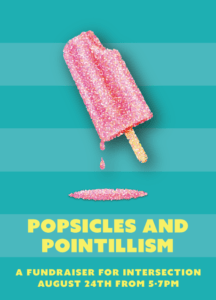 POPSICLES & POINTILLISM is a fundraiser for Intersection with live music, small bites, art creation, drinks, and a tour of the Clay Lady campus. Join us for this fun, casual, family friendly event supporting Intersection! We’ll have popsicles and live music from Intersection musicians along with creative activities. You’ll hear the news about our upcoming sixth season – ACTION. Guests will also be able to take a tour of the
POPSICLES & POINTILLISM is a fundraiser for Intersection with live music, small bites, art creation, drinks, and a tour of the Clay Lady campus. Join us for this fun, casual, family friendly event supporting Intersection! We’ll have popsicles and live music from Intersection musicians along with creative activities. You’ll hear the news about our upcoming sixth season – ACTION. Guests will also be able to take a tour of the 